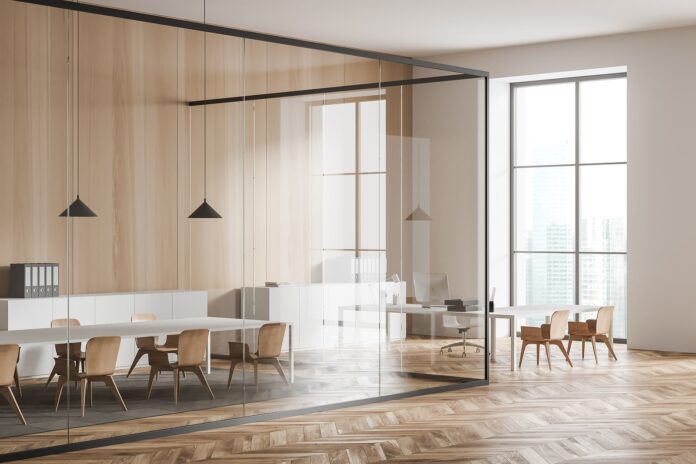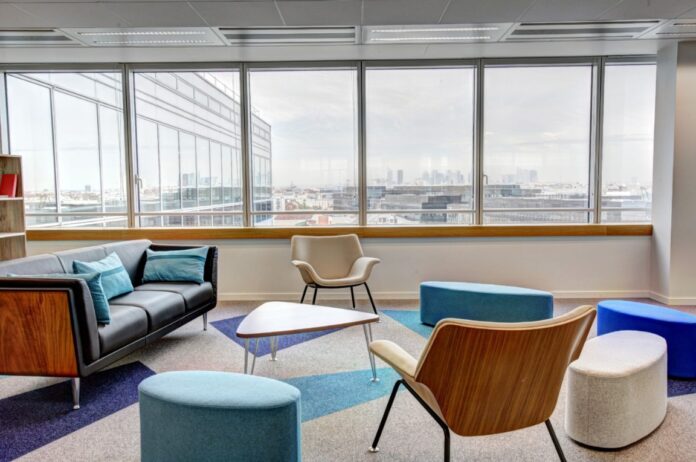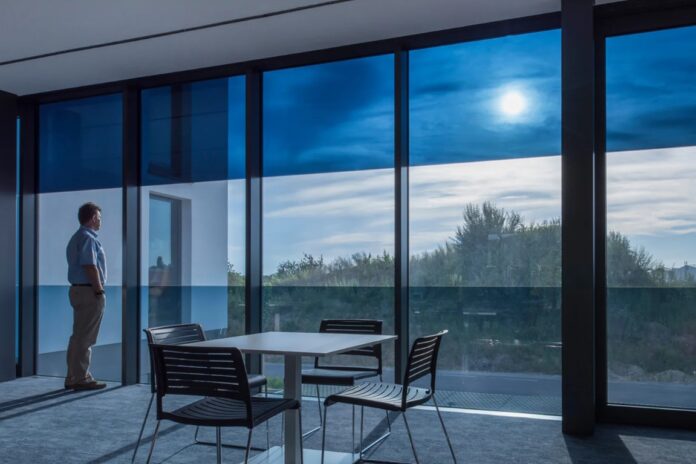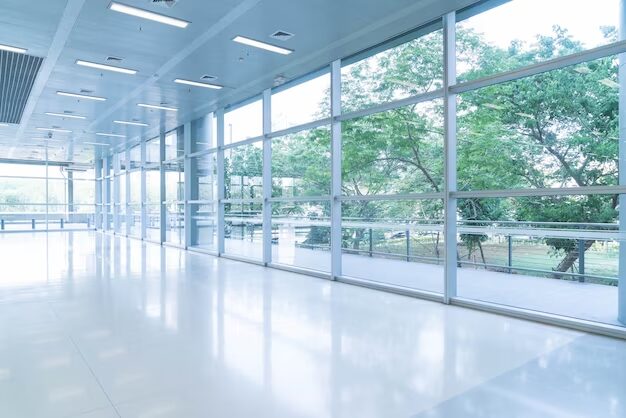As the world evolves at a rapid pace, so too does the manner in which businesses operate. One area witnessing revolutionary change is the humble meeting room. This transformation is being driven by an unlikely hero: glass.
But this is not just any glass; this is smart, futuristic, and sustainable glass, shaping the conference rooms of the future.
This article will delve into the world of glass conference rooms, how they are meeting the demands of the digital age, their role in sustainability, and the exciting possibilities they hold for the future.
Tech-Forward Spaces: Meeting the Demands of the Digital Age with Glass

In an era where technology has become the cornerstone of business operations, traditional brick and mortar meeting rooms are being replaced by innovative, tech-forward spaces. One of the key players in this revolution is glass.
Glass conference rooms provide a sleek, modern aesthetic and a functional space that caters to the needs of tech-savvy professionals.
Firstly, the integration of technology into glass conference rooms has enabled companies to create interactive spaces that foster collaboration.
Imagine holding a meeting where the glass walls become interactive whiteboards, capable of showcasing presentations, brainstorming ideas, and more.
The use of smart glass technology means companies can now turn their conference rooms into dynamic, tech-forward spaces that encourage creativity and innovation.
Secondly, glass conference rooms can also enhance communication. In a digital age where remote working is becoming the norm, the ability to connect with team members in different locations is vital.
Some glass conference rooms come equipped with video conferencing capabilities, allowing for seamless communication with remote workers. This means that even if team members are miles apart, they can still be part of important meetings and discussions.
Adaptation to Remote Work: The Hybrid Meeting Room with Glass Technology
The recent global pandemic has forced many businesses to adapt to remote work. This has presented a unique challenge: how to maintain collaboration and communication when team members are scattered across different locations. The hybrid meeting room, powered by glass technology, provides a solution.
A hybrid meeting room is essentially a blend of in-person and remote participants. This is made possible through glass technology, which can transform the walls of the conference room into large screens.
These screens can then be used to display the faces of remote participants, making them feel as though they are in the room. This not only improves communication but also fosters a sense of togetherness among team members.
Furthermore, the use of glass in conference rooms can also improve the quality of video calls. Glass surfaces are capable of producing better sound and light quality compared to traditional wall materials.
This means that remote participants can see and hear their colleagues clearly, making virtual meetings more effective.
Sustainability in Meetings: The Role of Glass Conference Rooms in Eco-Friendly Offices

In a time where businesses are becoming more conscious of their environmental impact, the role of glass conference rooms in promoting sustainability cannot be overlooked.
Glass is a sustainable material that can be recycled indefinitely without losing its quality. This means that glass conference rooms are not only stylish and functional, but they also contribute to a company’s green credentials.
Moreover, glass conference rooms can also contribute to energy efficiency. The transparency of glass allows natural light to filter into the room, reducing the need for artificial lighting.
This can lead to significant energy savings and a reduction in a company’s carbon footprint. Additionally, some types of smart glass can also control the amount of heat entering the room, further enhancing energy efficiency.
Glass conference rooms can also improve air quality. Unlike traditional wall materials that can emit harmful substances, glass is an inert material that does not release any volatile organic compounds (VOCs). This contributes to a healthier indoor environment, enhancing the well-being of employees.
The Virtual Frontier: Exploring Virtual Reality and Augmented Reality in Glass Meeting Rooms
As we venture further into the digital age, the possibilities for glass conference rooms become even more exciting. One area that holds great promise is the integration of virtual reality (VR) and augmented reality (AR) into meeting spaces.
Imagine putting on a VR headset in a glass conference room and suddenly finding yourself in a completely different environment.
You could be standing in a bustling cityscape, a serene beach, or even on another planet. This technology can transform meetings from mundane to extraordinary, creating immersive experiences that engage and captivate participants.
AR, on the other hand, can overlay digital information onto the physical world. In a glass conference room, this could mean projecting data onto the glass walls, creating an interactive display that can be manipulated in real time.
This opens up a world of possibilities for presentations, brainstorming sessions, and collaborative work.
Beyond the Boardroom: The Versatility of Glass Conference Rooms in the Future

The glass conference room of the future is not just confined to the boardroom. These spaces are versatile and can be used for a variety of purposes.
From hosting events and workshops to serving as creative spaces for brainstorming and innovation, the possibilities are endless.
In conclusion, as we look toward the future of meetings, it is clear that glass conference rooms will play a significant role.
With their sleek design, technological capabilities, and sustainability credentials, these spaces represent the meeting rooms of the future.
Embracing this trend can give companies a competitive edge, fostering a culture of innovation and collaboration that is crucial in the digital age.








